Lamptest-1 brightness analyzer
In our world, in which everything seemed to be invented long ago and everything is produced, I constantly encounter the fact that I lack various devices that are not hard to do, but for some reason nobody does. So, I have not met a single luxmeter that could show the change in brightness as a percentage of the initial value. I had to master the Arduino and do it myself.
The device Lamptest-1 in the current version v2.2 can do the following:
- measurement of the level of illumination in lux;
- display of the stored and current illumination and the differences between them in percent;
- time display from the moment of memorization of light;
- transfer the level of illumination to a computer with the ability to build graphs in Excel;
- measurement of luminous flux by comparison with the standard.
')
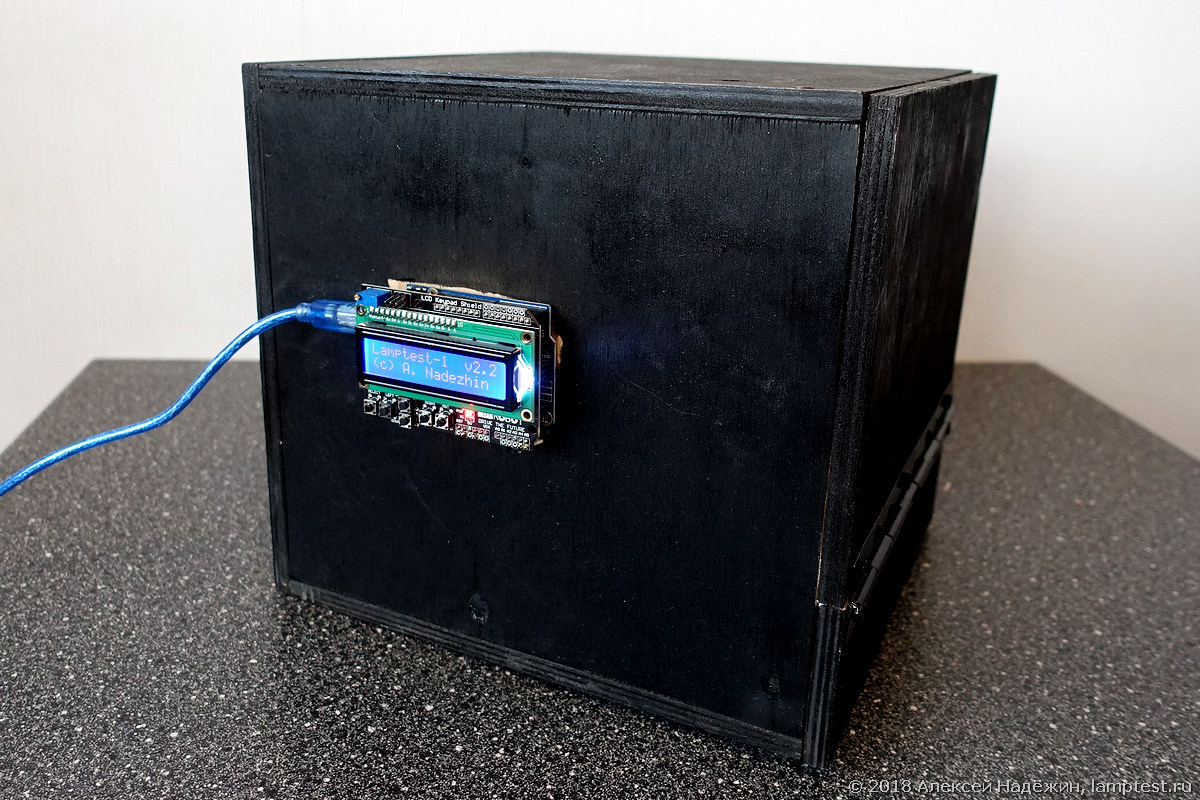
The device uses a digital sensor TSL2561 with two photodiodes - one “sees” in a wide range, the second in infrared. The difference between the values produced by the two sensors gives the level of illumination in the visible spectrum.
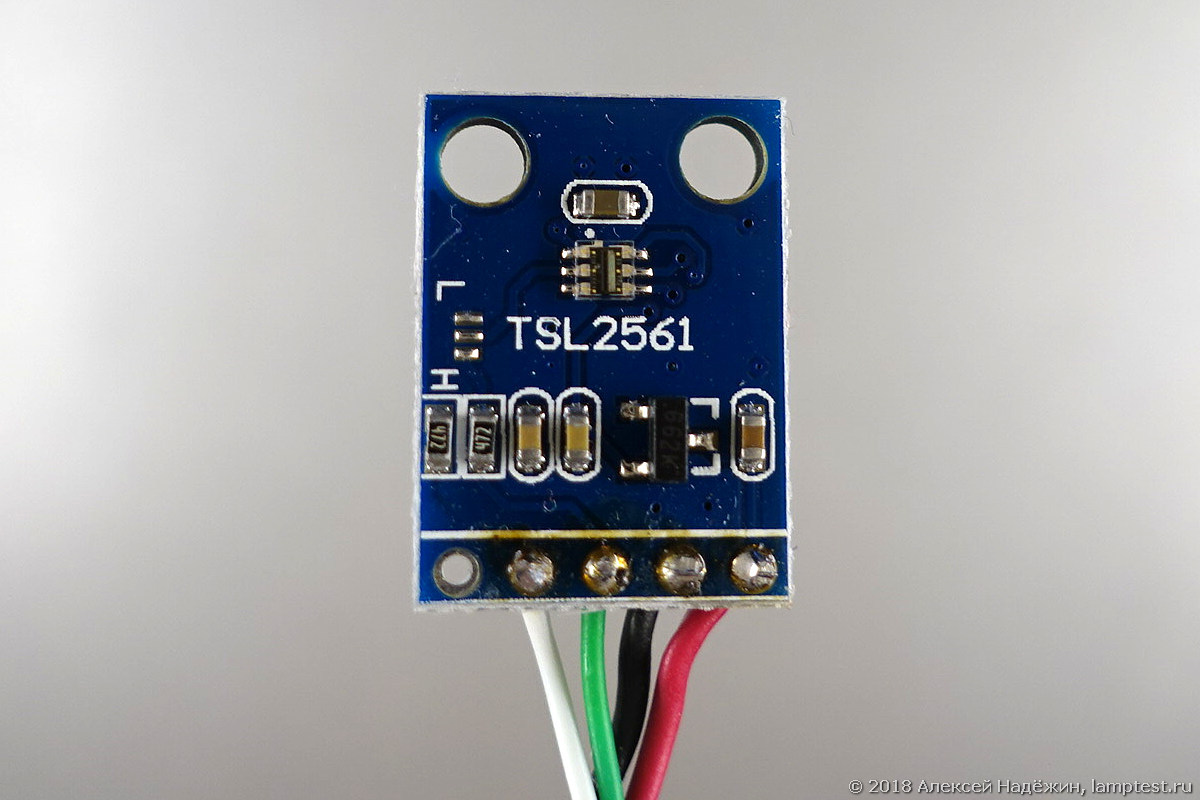
When you turn on the device, the light level is measured and remembered - it is displayed at the beginning of the second line of the screen. At the beginning of the first line of the screen displays the current level of illumination, in the center - the difference in percentage of the current level from the memorized. At the end of the first line, the time from the moment of memorizing the initial level of illumination is displayed.
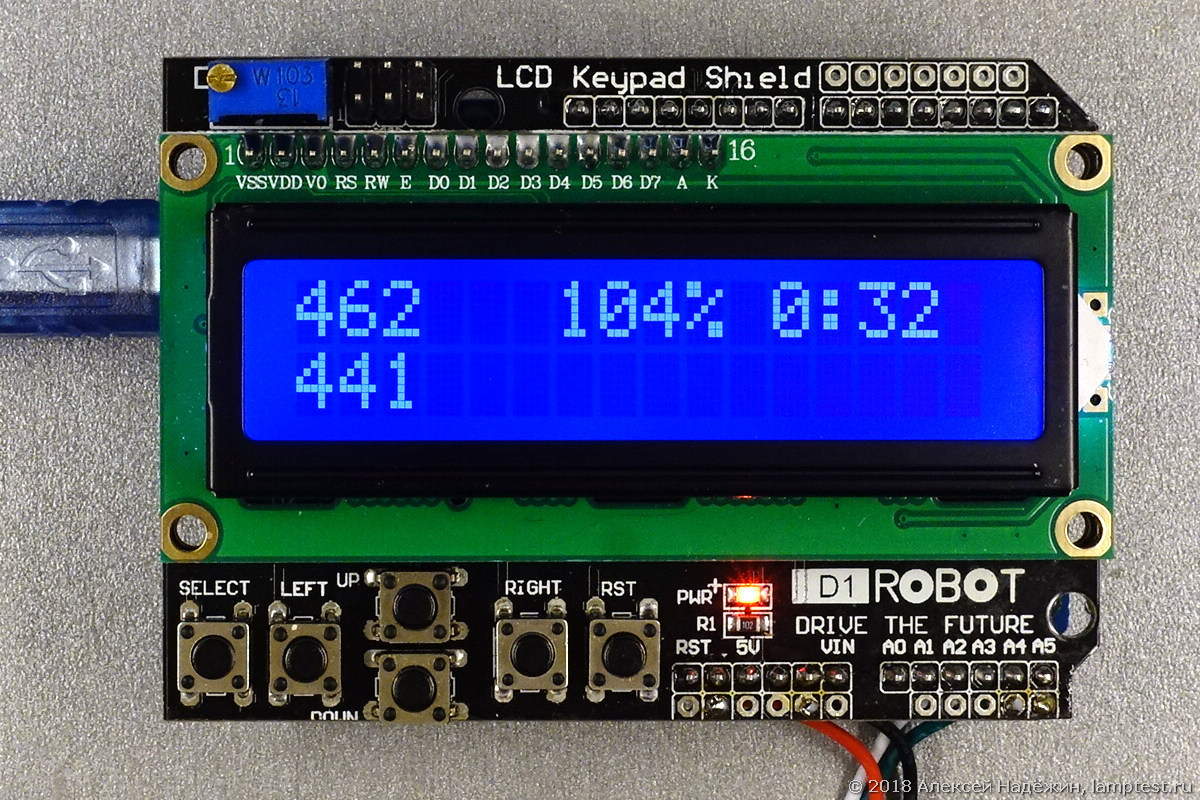
When you press the first button, the current light level is memorized and the timer starts a new countdown.
Every ten seconds, the current timer value and the current light level are transmitted to the computer. They can be viewed in the terminal Arduino.

Data can be imported into Excel to create graphs of changes in light. For example, this is how a decrease in the brightness of an LED lamp looks like within 30 minutes after switching on.
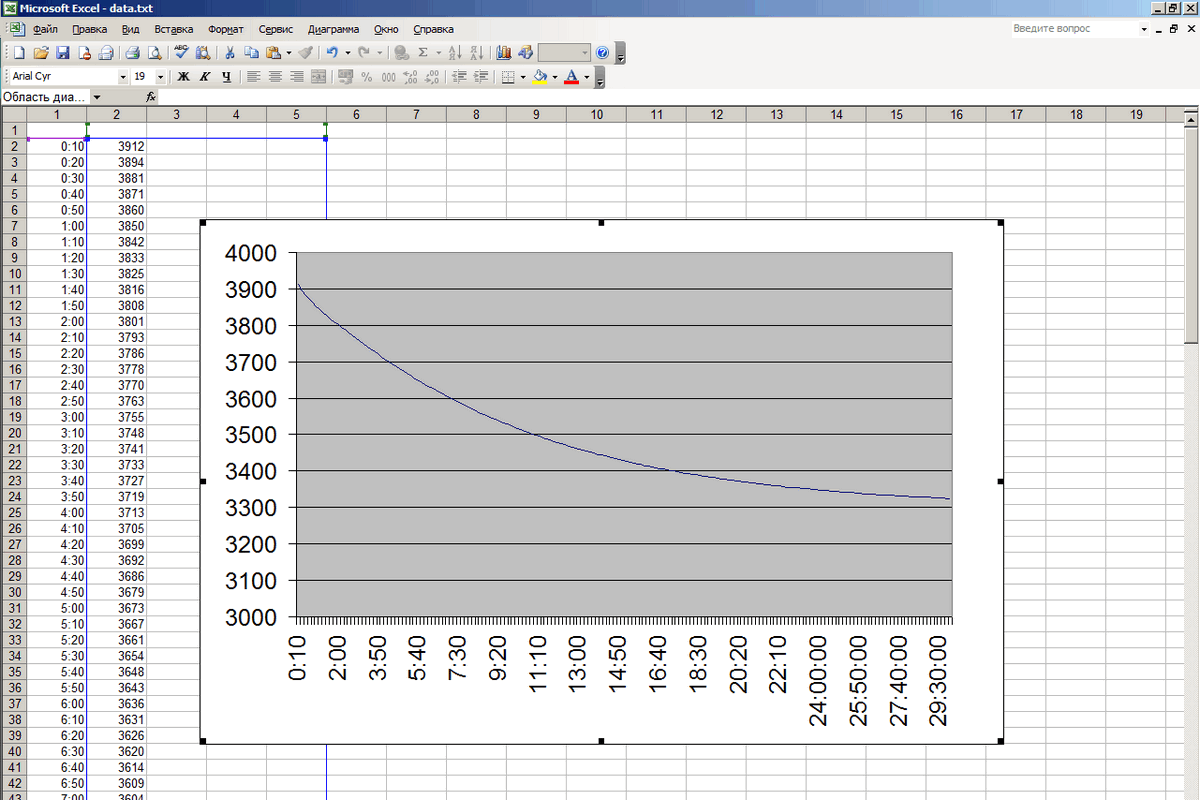
Of course, the device can work independently from the computer - just connect its cable to any USB-charging.
The second function of the device is luminous flux measurement. For calibration, you will need a reference lamp with a known luminous flux and color temperature, approximately the same as that of the test lamp.
In the simplest case, you can first install the reference, and then test the lamp in a lamp with a round frosted canopy, place the sensor device at a fixed distance from the lamp and take measurements in the dark.
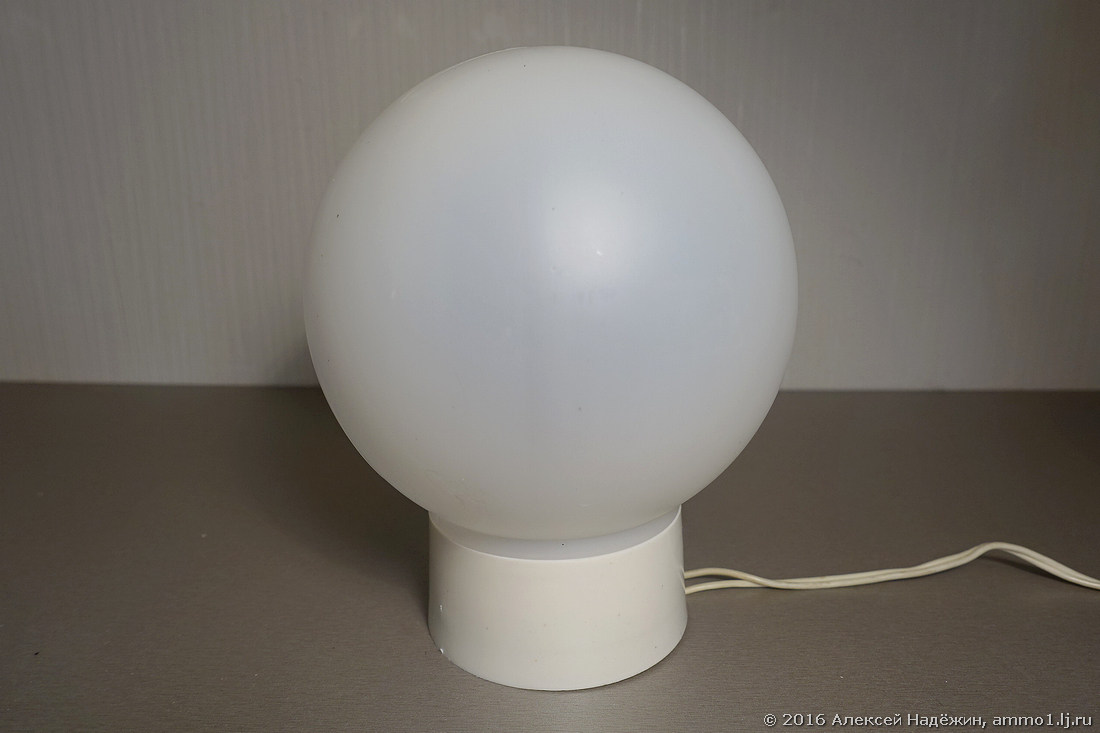
A more “advanced” option is the use of some kind of integrating volume that allows you to “collect” all the lamp's light. For professional measurements, large integrating spheres are used; in our case, a 25x25x25 cm plywood cube, painted from the inside with white water emulsion, is enough.

A curtain is installed in front of the sensor, preventing direct light from entering the lamp (the paper is operated by a light filter so that the sensor is not overloaded from the light of bright lamps).
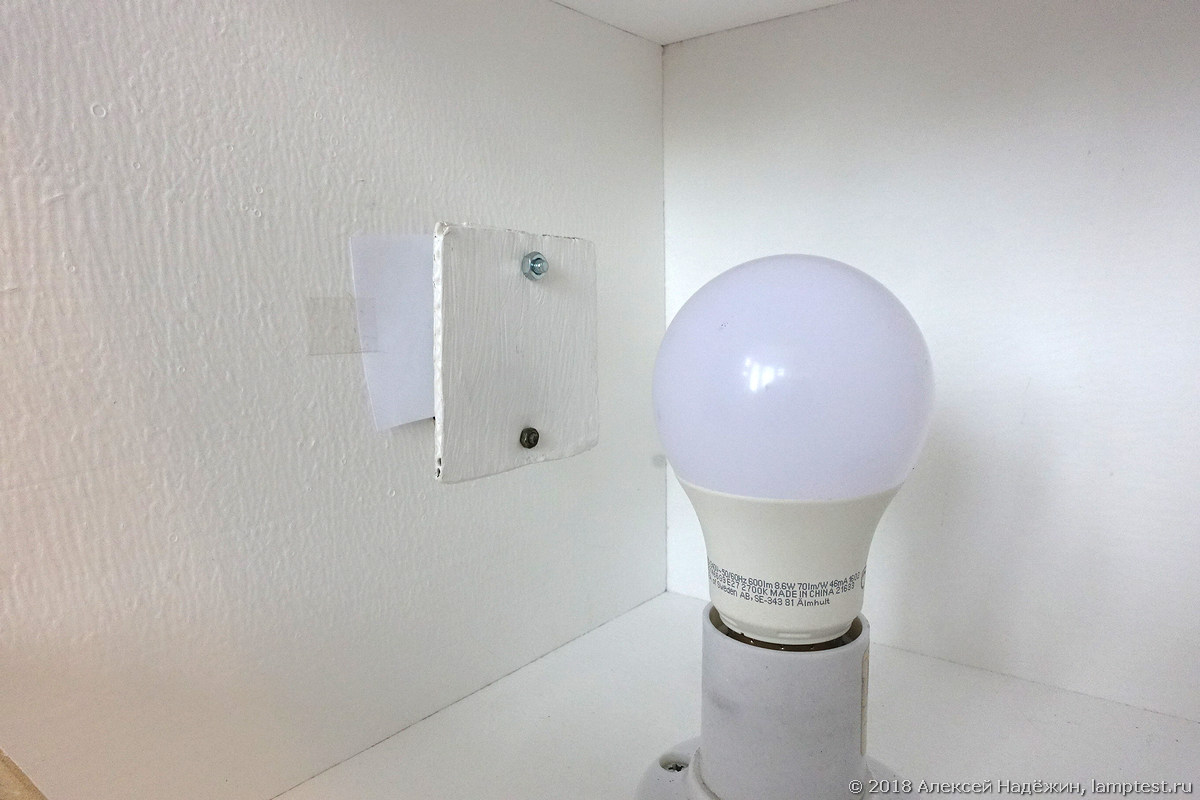
After installing and warming up the reference lamp, you need to press the second button and the luminous flux value of 600 lm appears on the screen, which can be adjusted with the up and down buttons according to the actual luminous flux of the reference lamp. Then press the first button to memorize the reference value.
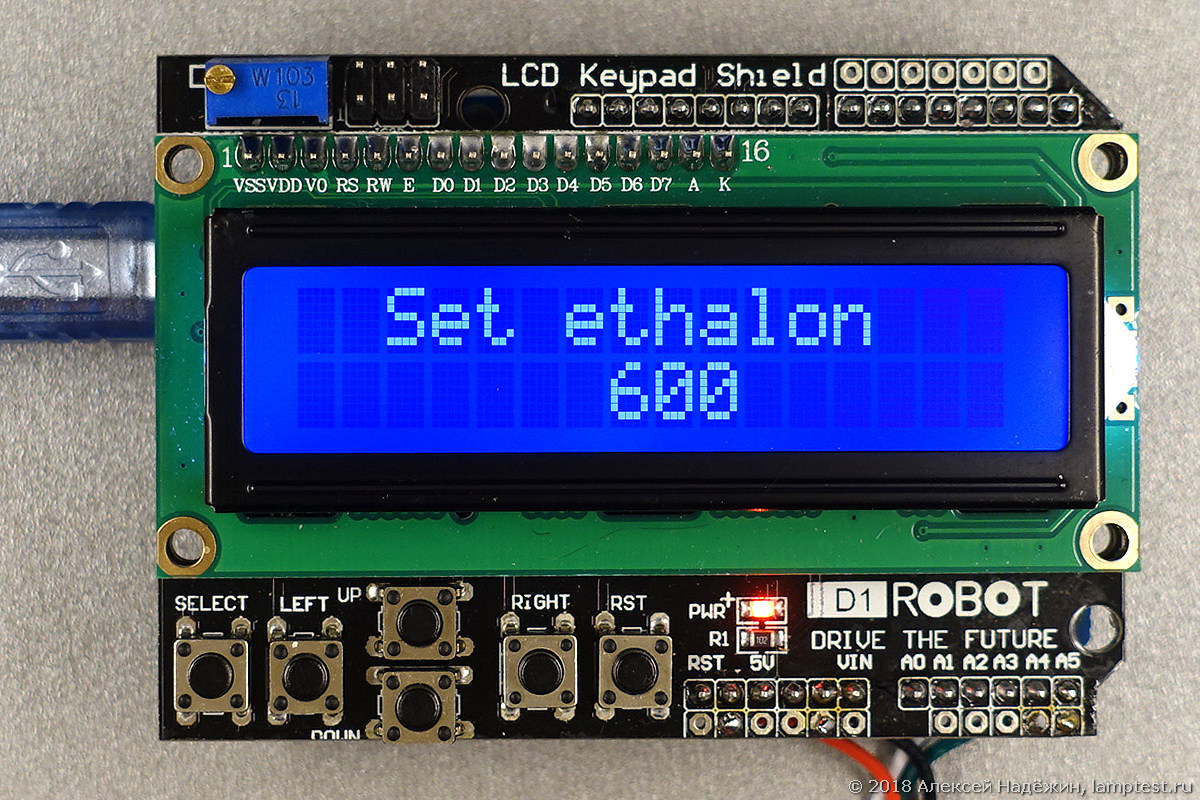
(I know, I know that there is no such word in English and there should be a reference, I will correct it in a new firmware :)
Now, in the center of the second line, the instrument shows the luminous flux of the lamp being tested.
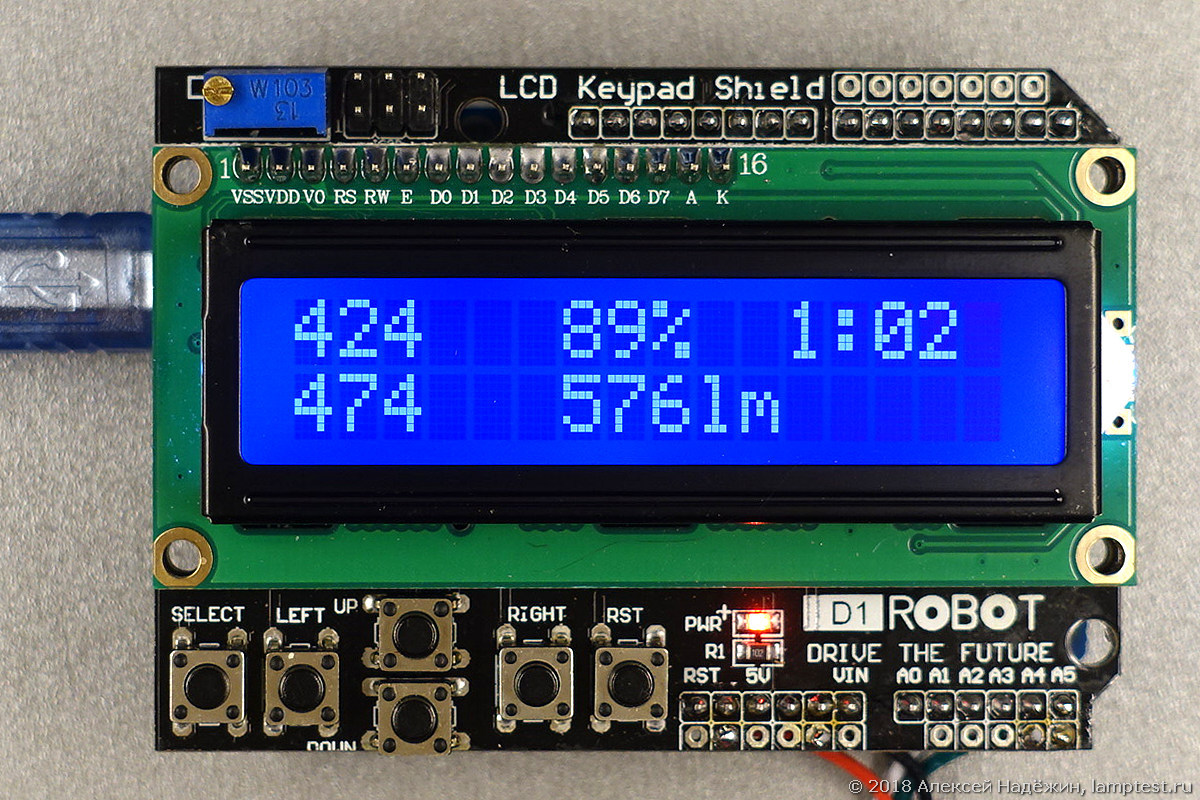
The Arduino Uno R3 complete with the LCD Keypad Shield board is a ready-made microcomputer with a screen, a keyboard and a USB port, so this kit is very convenient to construct various simple devices. Surprisingly, there are no cases for such a bundle on all Aliexpress, although there are a lot of cases for one Arduino board. So the acrylic case also had to be constructed independently.
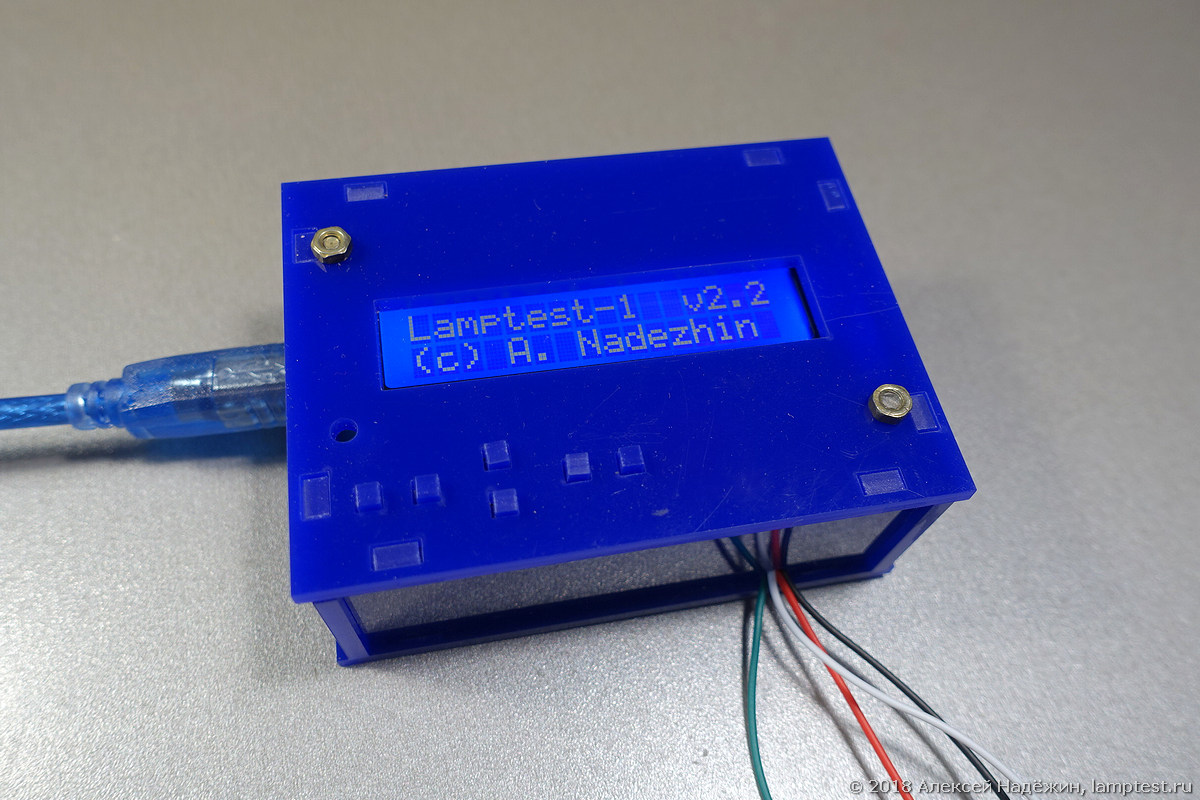
Now there are five instances of Lamptest-1 (two of them in cubes). I thought that perhaps such a device is needed not only by me, and I have the opportunity to start manufacturing Lamptest-1 (with or without cubes) on order.
Lamptest-1, installed in the "cube", it can be used to estimate the luminous flux of any lamps. Of course, it will not give such accuracy as professional equipment, but in 10% accuracy (which, by the way, all professional laboratories say) will be completed.
In the project Lamptest.ru I use the device Lamptest-1 to measure the minimum voltage of each lamp (the device helps to track the moment when the lamp reduces brightness by 10%), in addition the device helps to analyze the change in the brightness of the lamps during heating.
© 2018, Alexey Nadyozhin
The device Lamptest-1 in the current version v2.2 can do the following:
- measurement of the level of illumination in lux;
- display of the stored and current illumination and the differences between them in percent;
- time display from the moment of memorization of light;
- transfer the level of illumination to a computer with the ability to build graphs in Excel;
- measurement of luminous flux by comparison with the standard.
')

The device uses a digital sensor TSL2561 with two photodiodes - one “sees” in a wide range, the second in infrared. The difference between the values produced by the two sensors gives the level of illumination in the visible spectrum.

When you turn on the device, the light level is measured and remembered - it is displayed at the beginning of the second line of the screen. At the beginning of the first line of the screen displays the current level of illumination, in the center - the difference in percentage of the current level from the memorized. At the end of the first line, the time from the moment of memorizing the initial level of illumination is displayed.

When you press the first button, the current light level is memorized and the timer starts a new countdown.
Every ten seconds, the current timer value and the current light level are transmitted to the computer. They can be viewed in the terminal Arduino.

Data can be imported into Excel to create graphs of changes in light. For example, this is how a decrease in the brightness of an LED lamp looks like within 30 minutes after switching on.

Of course, the device can work independently from the computer - just connect its cable to any USB-charging.
The second function of the device is luminous flux measurement. For calibration, you will need a reference lamp with a known luminous flux and color temperature, approximately the same as that of the test lamp.
In the simplest case, you can first install the reference, and then test the lamp in a lamp with a round frosted canopy, place the sensor device at a fixed distance from the lamp and take measurements in the dark.

A more “advanced” option is the use of some kind of integrating volume that allows you to “collect” all the lamp's light. For professional measurements, large integrating spheres are used; in our case, a 25x25x25 cm plywood cube, painted from the inside with white water emulsion, is enough.

A curtain is installed in front of the sensor, preventing direct light from entering the lamp (the paper is operated by a light filter so that the sensor is not overloaded from the light of bright lamps).

After installing and warming up the reference lamp, you need to press the second button and the luminous flux value of 600 lm appears on the screen, which can be adjusted with the up and down buttons according to the actual luminous flux of the reference lamp. Then press the first button to memorize the reference value.

(I know, I know that there is no such word in English and there should be a reference, I will correct it in a new firmware :)
Now, in the center of the second line, the instrument shows the luminous flux of the lamp being tested.

The Arduino Uno R3 complete with the LCD Keypad Shield board is a ready-made microcomputer with a screen, a keyboard and a USB port, so this kit is very convenient to construct various simple devices. Surprisingly, there are no cases for such a bundle on all Aliexpress, although there are a lot of cases for one Arduino board. So the acrylic case also had to be constructed independently.

Now there are five instances of Lamptest-1 (two of them in cubes). I thought that perhaps such a device is needed not only by me, and I have the opportunity to start manufacturing Lamptest-1 (with or without cubes) on order.
Lamptest-1, installed in the "cube", it can be used to estimate the luminous flux of any lamps. Of course, it will not give such accuracy as professional equipment, but in 10% accuracy (which, by the way, all professional laboratories say) will be completed.
In the project Lamptest.ru I use the device Lamptest-1 to measure the minimum voltage of each lamp (the device helps to track the moment when the lamp reduces brightness by 10%), in addition the device helps to analyze the change in the brightness of the lamps during heating.
© 2018, Alexey Nadyozhin
Source: https://habr.com/ru/post/410943/
All Articles